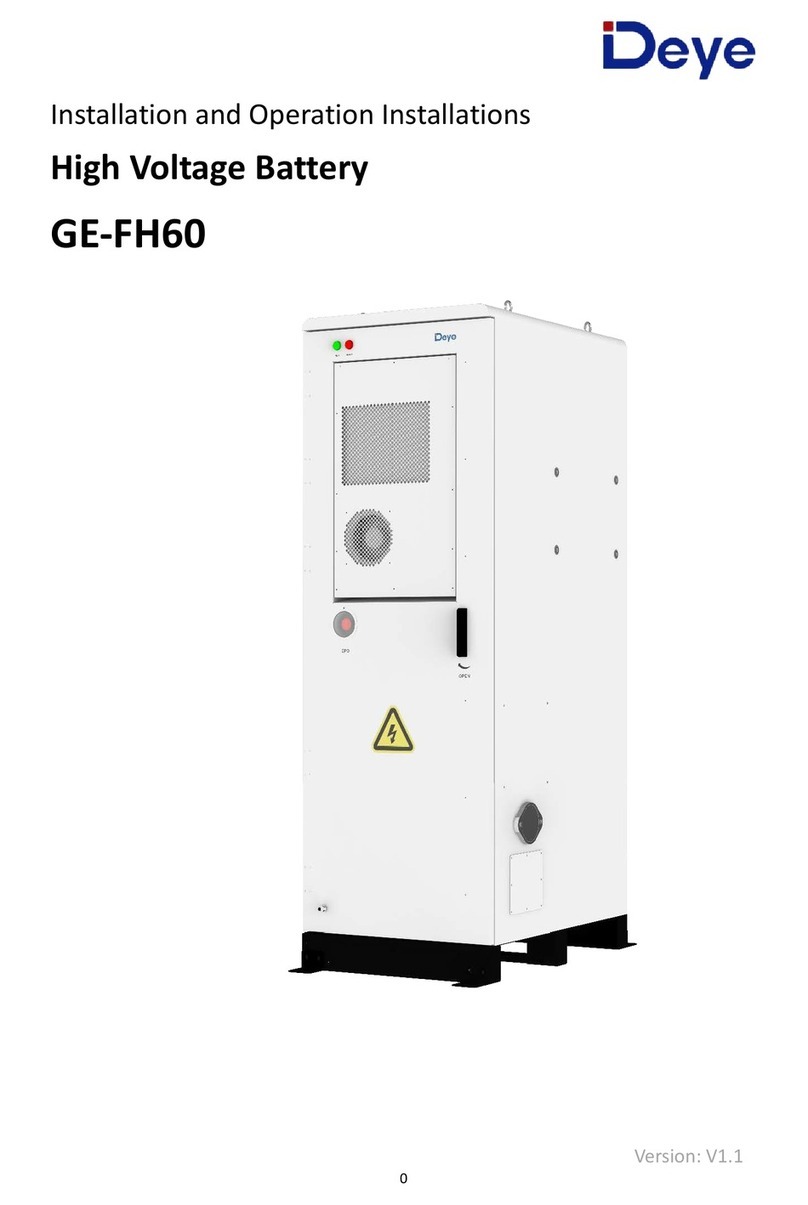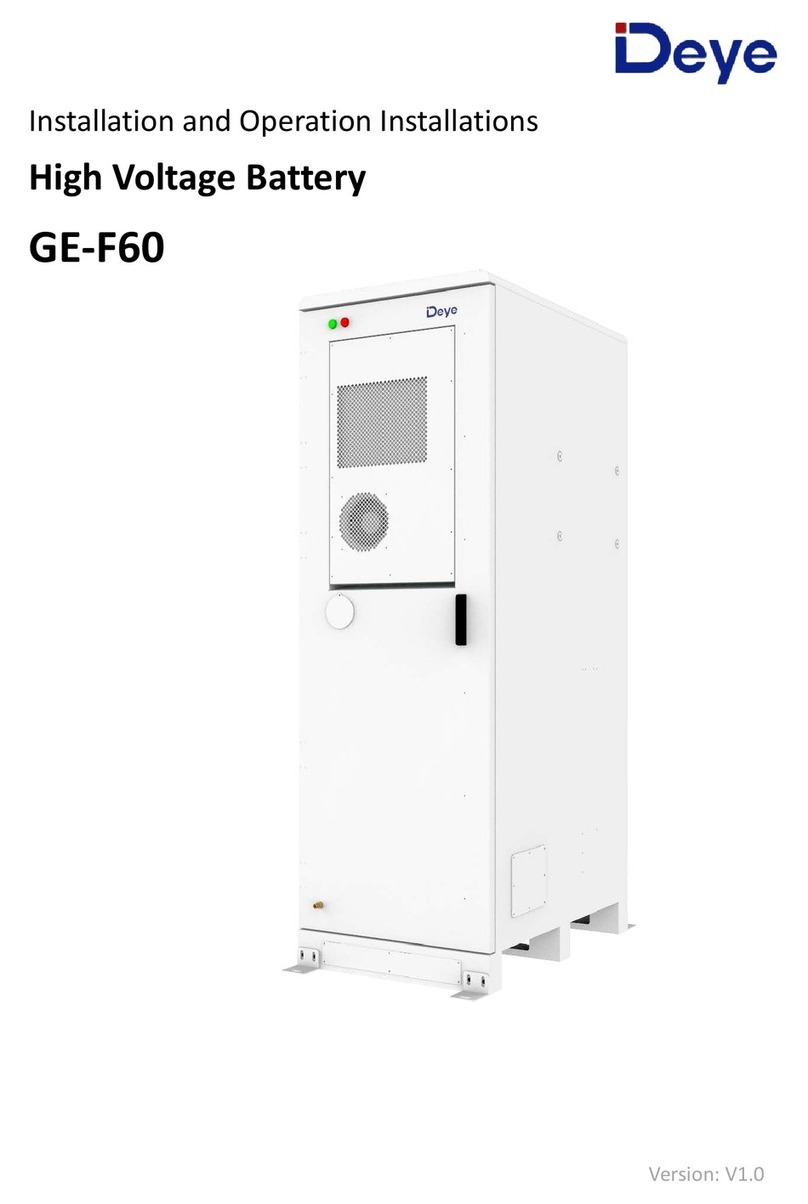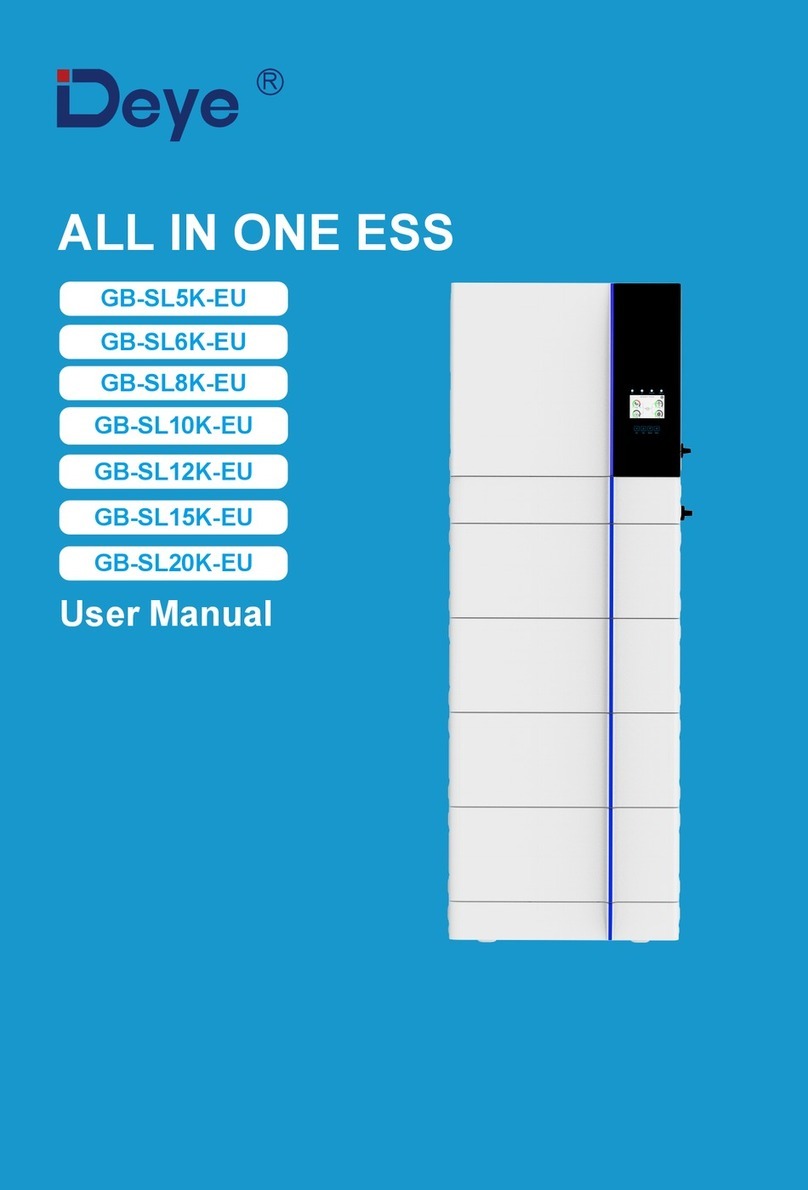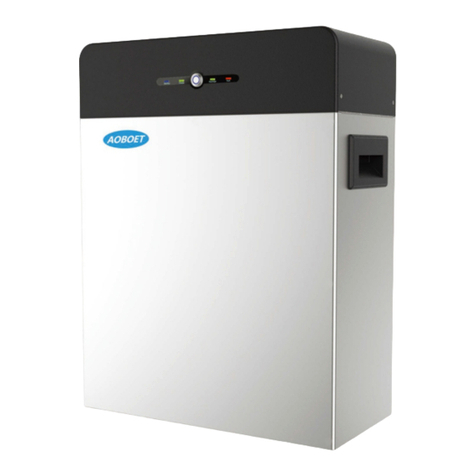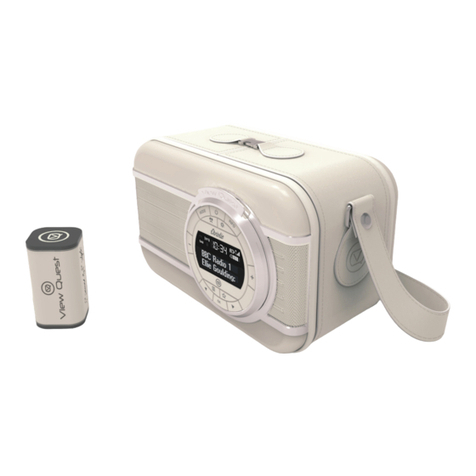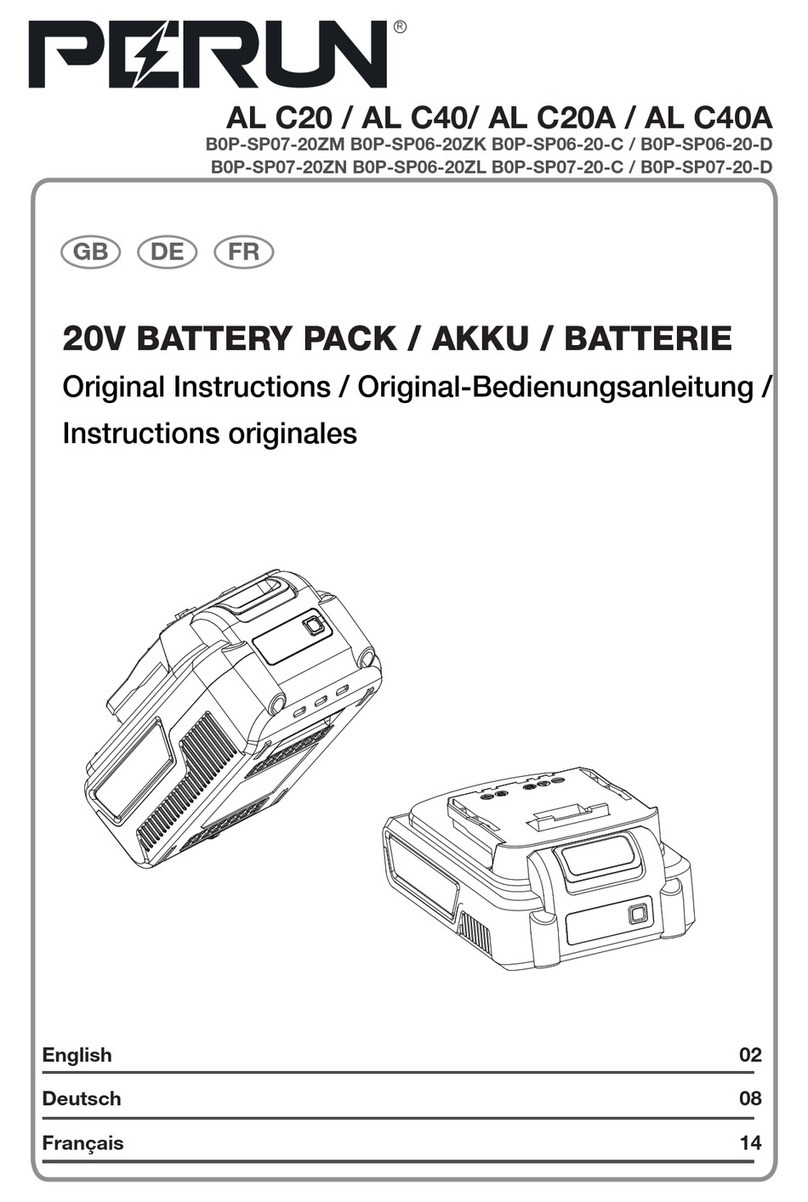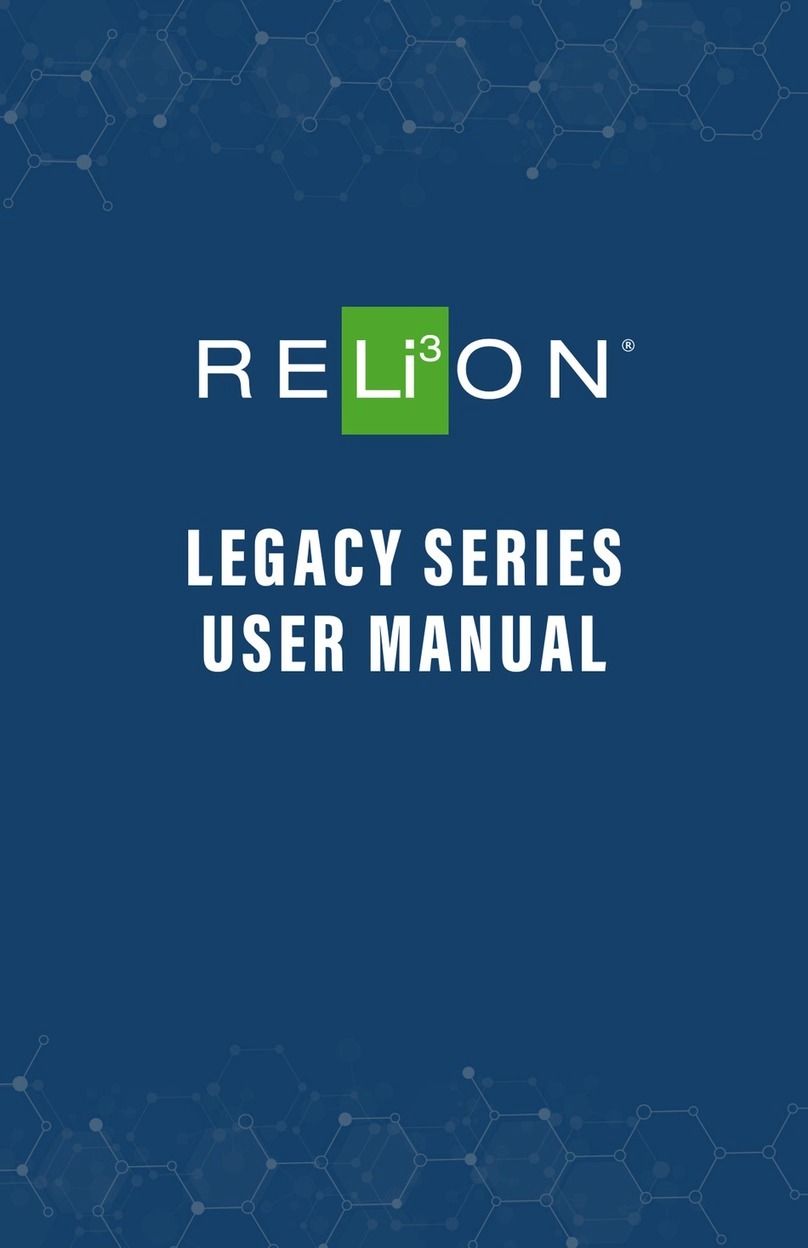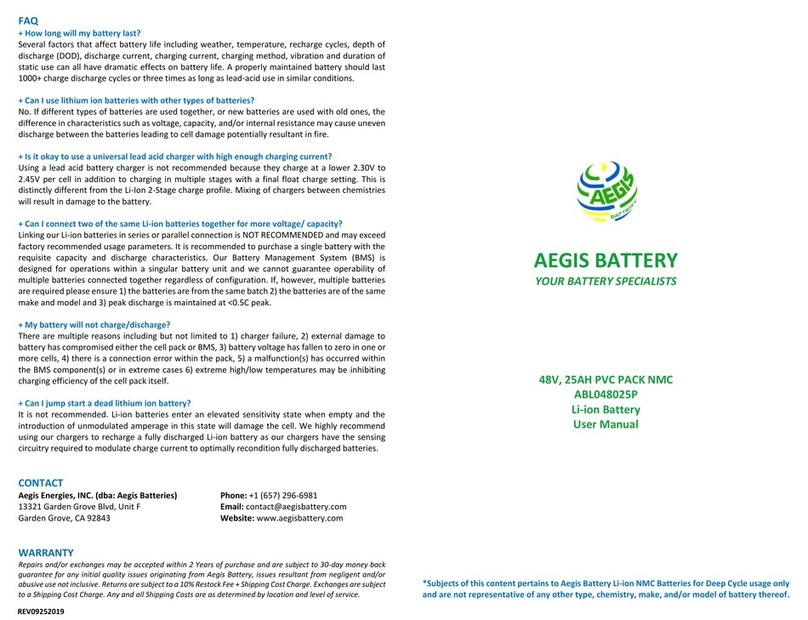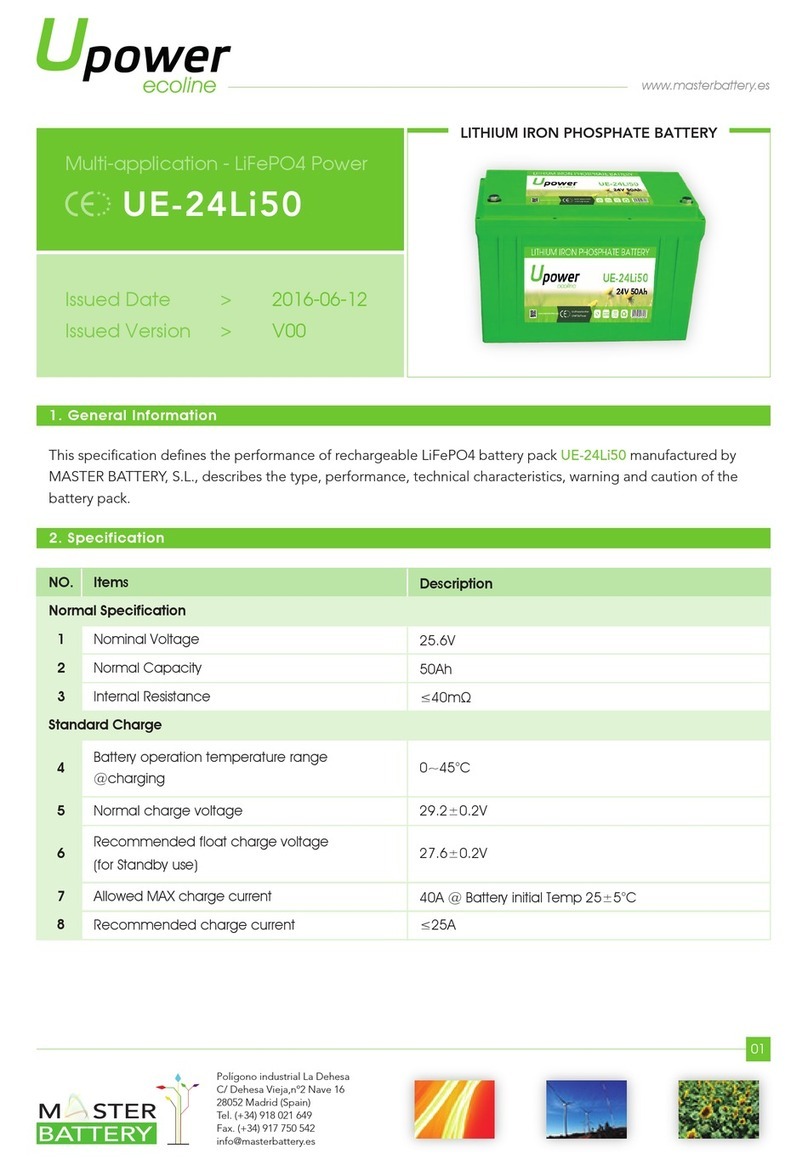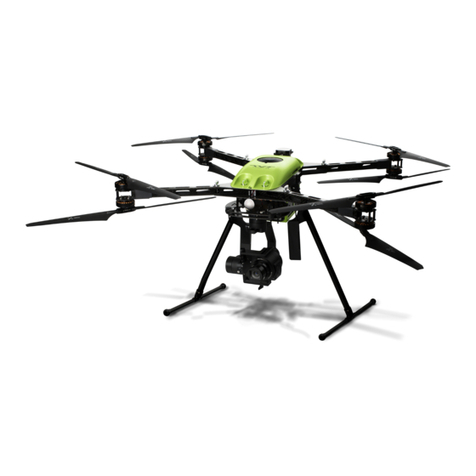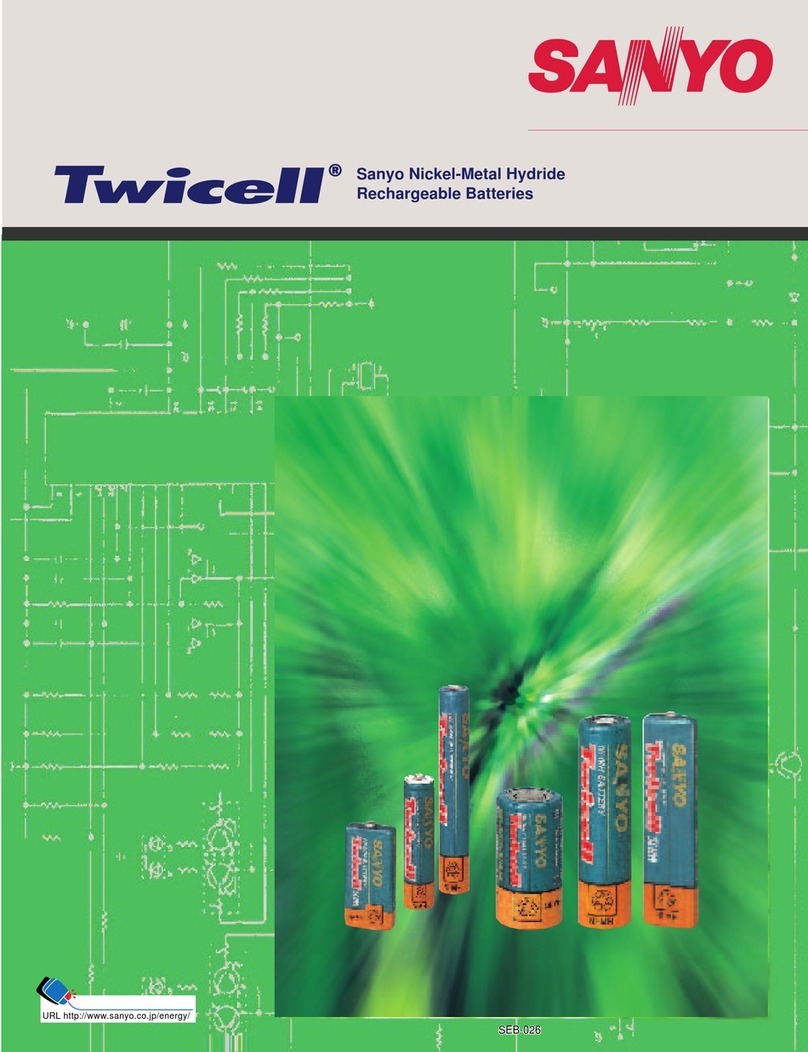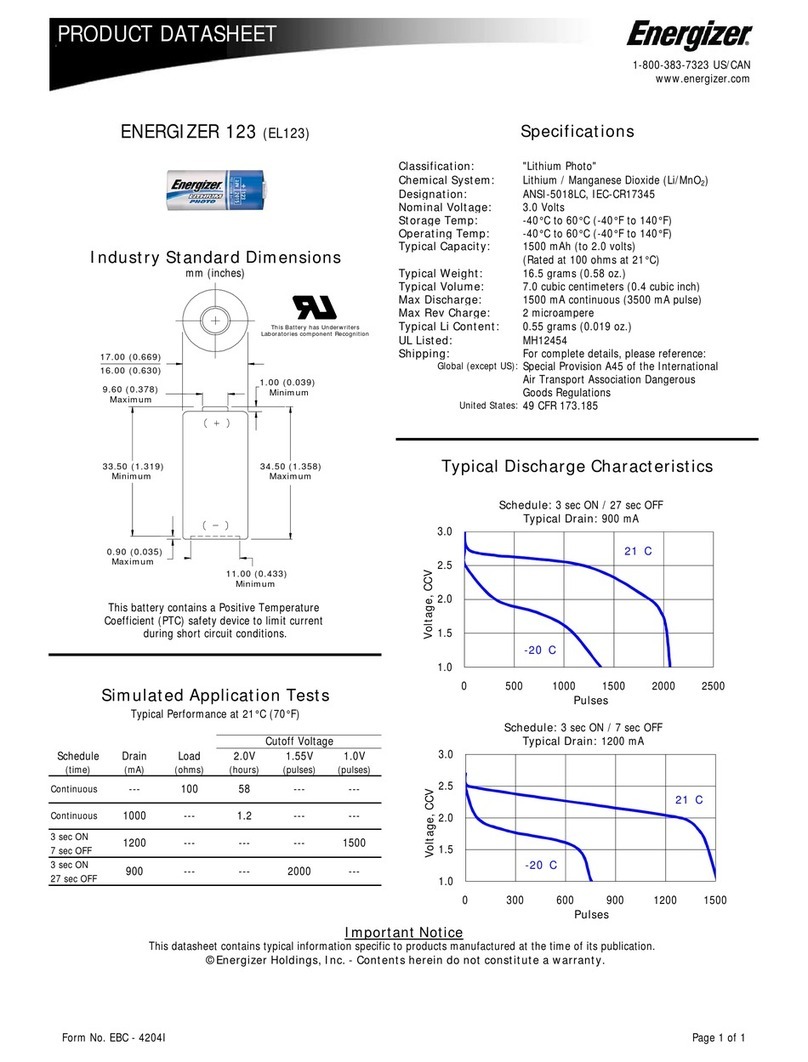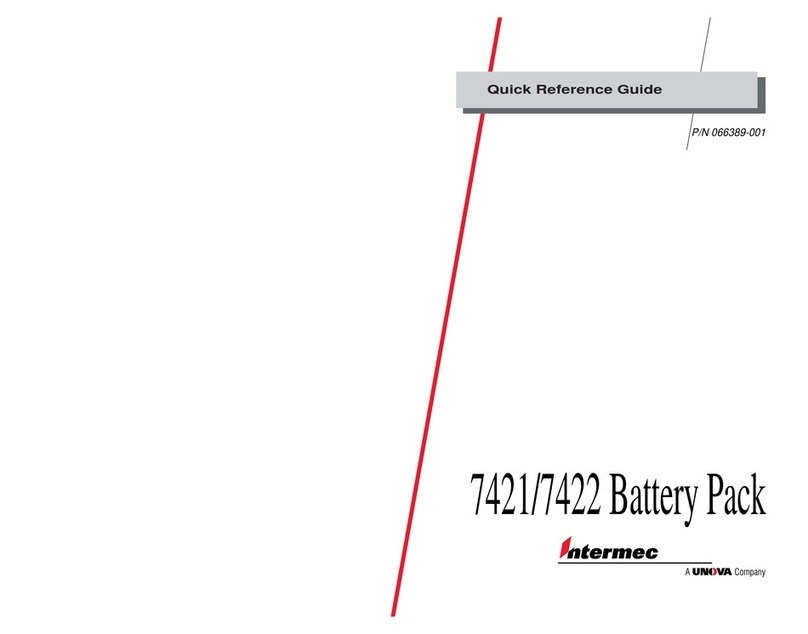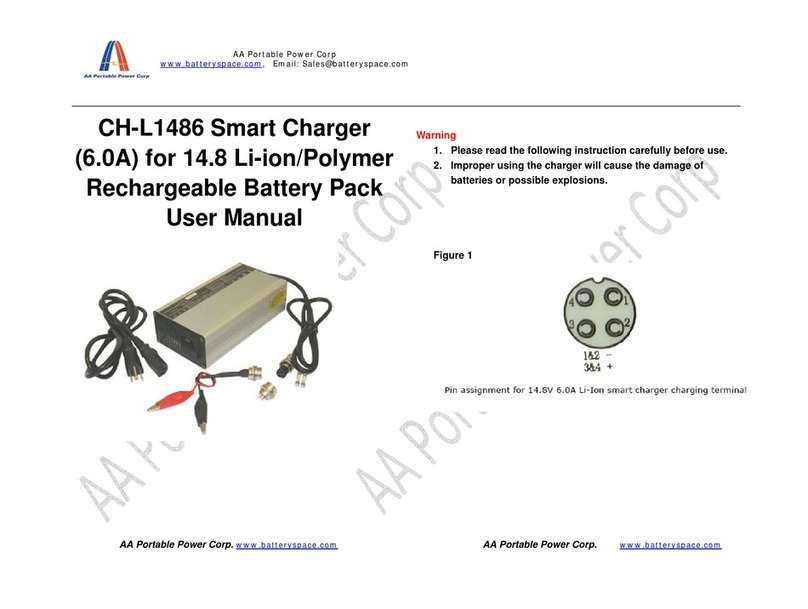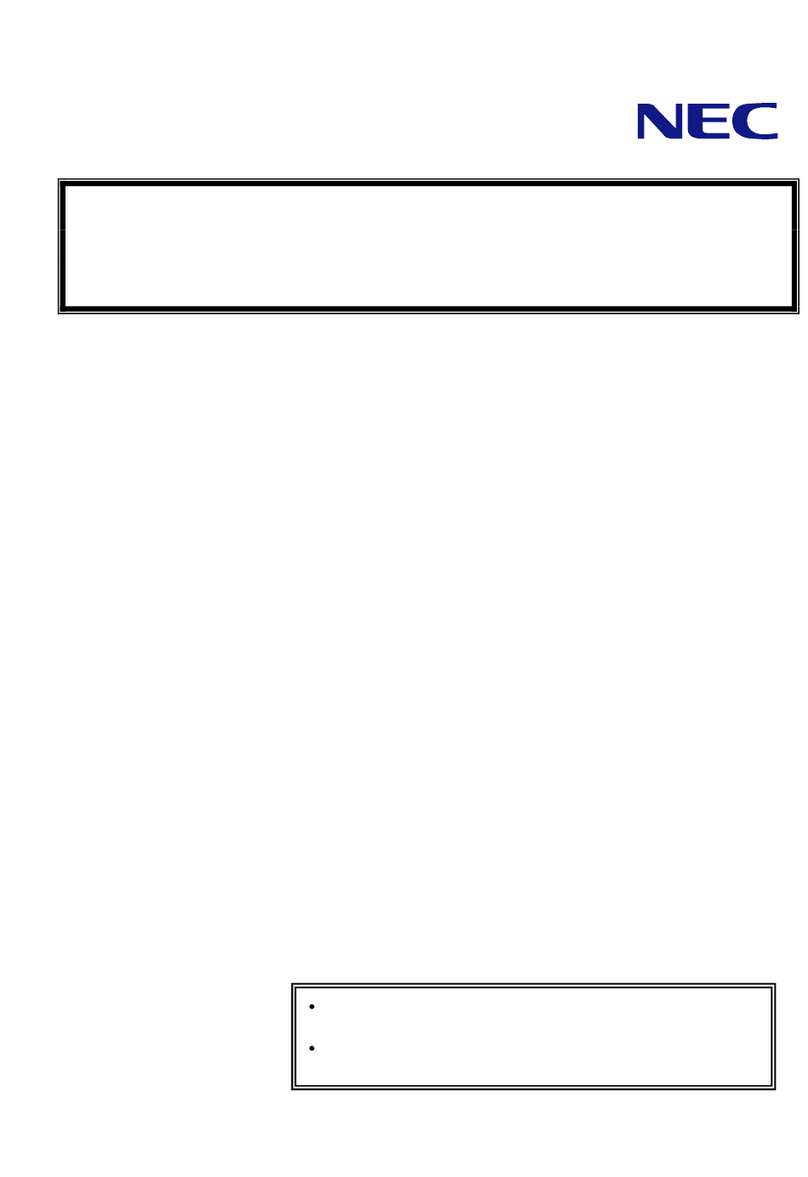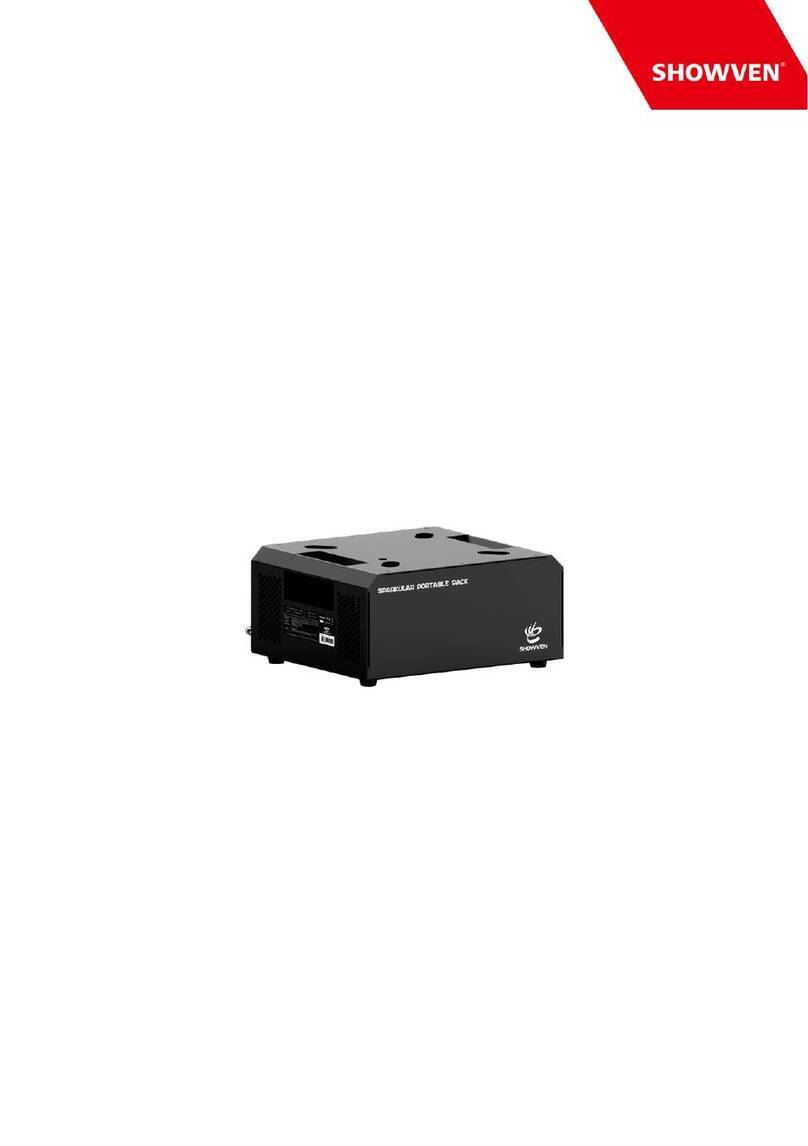Deye Spring Series User manual

User Manual
Spring series LFP Battery
SE-G5.3
Version:V1.2


~ 1 ~
About This Manual
The manual mainly describes the product information, guidelines for installation, operation, and
maintenance. The manual cannot include complete information about the solar photovoltaic-energy
storage hybrid system.
How to Use This Manual
Read the manual and other related documents before performing any operation on the battery.
Documents must be stored carefully and be always available.
Contents may be updated or modified periodically due to product update iterations. The
manual is subject to change without prior notice. The latest manual can be acquired via service
1.Safety Introductions
Reminding
1)
It is very important and necessary to read the user manual carefully (in the accessories) before
installing or using battery. Failure to do so or to follow any of the instructions or warnings in this
document can result in electrical shock, serious injury, or death, or can damage battery,
potentially rendering it inoperable.
2)
If the battery is stored for long time, it is required to charge them every six months, and the SOC
should be no less than 50%.
3)
Battery needs to be recharged within 48 hours after fully discharged.
4)
Do not expose cable outside.
5)
All the battery terminals must be disconnected for maintenance.
6)
Please contact the supplier within 24 hours if there is something abnormal.
7)
Do not use cleaning solvents to clean battery.
8)
Do not expose battery to flammable or harsh chemicals or vapors.
9)
Do not paint any part of Battery, include any internal or external components.
10)
Do not connect battery with PV solar wiring directly.
11)
The warranty claims are excluded for direct or indirect damage due to above items.
12)
Any foreign object is prohibited to insert into any part of battery.

~ 2 ~
Warning
1.1 Before Connecting
1)
After unpacking, please check product and packing list first, if product is damaged or lack of
parts, please contact with the local retailer.
2)
Before installation, be sure to cut off the grid power and make sure the battery is in the turned-
off mode.
3)
Wiring must be correct, do not mistake the positive and negative cables, and ensure no short
circuit with the external device.
4)
It is prohibited to connect the battery and AC power directly.
5)
Battery system must be well grounded and the resistance must be less than 1Ω.
6)
Please ensured the electrical parameters of battery system are compatible to related equipment.
7)
Keep the battery away from water and fire.
1.2 In Using
If the battery system needs to be moved or repaired, the power must be cut off and the
battery is completely shut down.
It is prohibited to connect the battery with different type of Battery.
It is prohibited to put the batteries working with faulty or incompatible inverter.
It is prohibited to disassemble the battery.
In case of fire, only dry fire extinguishers can be used. Liquid fire extinguishers are
forbidden.
Please do not open, repair, or disassemble the battery except staffs from DEYE or
authorized by DEYE. We do not undertake any consequences or related responsibility
which because of violation of safety operation or violating of design, production, and
equipment safety standards.
2. Product Introduction
This lithium iron phosphate battery is one of new energy storage products developed and
produced by DEYE, it can be used to support reliable power for various types of equipment
and systems.
This battery is especially suitable for application scene of high power, limited installation
space and long cycle life.
This battery has built-in BMS battery management system, which can manage and monitor
cells information including voltage, current and temperature. What’s more, BMS can balance
cells charging and discharging to extend cycle life.
Multiple batteries can connect in parallel for larger capacity and longer power supporting
duration requirements
2.1 Front Panel Function Introduction
In order to operate the product correctly, please carefully view the function of the front panel of the
battery.

~ 3 ~
Figure 2-1: Front Panel Function Introduction
1. Power button: to turn ON/OFF the whole battery BMS standby, no power output.
2. DRY CONTACT output.
3. PCS:Inverter communication terminal: (RJ45 port) follow the CAN protocol (baud rate:
500kbps), and RS-485(baud rate: 9600bps), used to output battery information to the inverter.
4. IN: parallel Communication Terminal: (RJ45 port) Connect "out" Terminal of Previous battery, for
communication between multiple parallel batteries.
5. SOC: These 5 LEDs are used to display the pack SOC. The lightning of these LEDs indicates the
SOC of 20%, 40%, 60%,80% and 100%.
6. RUN light: green LED lighting to show the battery running status
Alarm light: yellow and red LED lighting to show the battery has been alarmed or protected.
7. OUT: parallel Communication Terminal: (RJ45 port) Connect "IN" Terminal of Next battery, for
communication between multiple parallel batteries.
8. USB: (USB port) Used to insert USB flash drive for battery upgrade.
9. Negative output terminal.
10.Grounding bolt.
11.Handle: It was used to carry/move the battery.
12.Positive output terminal.
13.Used for fixing with cabinet.

~ 4 ~
2.2 Communication Port
(1) PCS Port Definition
(2) IN Port Definition
(3) OUT Port Definition

~ 5 ~
2.3 Product Specifications
Table 2-1: Product Specifications
Main Parameter
SE-G5.3
Battery Chemistry
LiFePO4
Capacity (Ah)
104
Scalability
Max. 64 pcs pack (340kWh) in parallel (Max. 32 pcs no external setup)
Nominal Voltage (V)
51.2
Operating Voltage(V)
43.2~57.6
Energy (kWh)
5.32
Usable Energy (kWh)[1]
4.79
Charge/Discharge
Current (A) [2]
Recommend
50
Max.
100
Peak
150 (2mins,25℃)
Other Parameter
Recommend Depth of Discharge
90%
Dimension (W/H/D, mm)
440*133*560
Weight Approximate(kg)
44
Master LED indicator
5LED(SOC:20%~100%)
3LED (working, alarming, protecting)
IP Rating of enclosure
IP20
Working Temperature
Charge:0℃~55℃
Discharge:-20℃~55℃
Storage Temperature
0℃~35℃
Humidity
5%~95%
Altitude
≤2000m
Cycle Life
≥6000(25℃±2℃,0.3C/0.3C 90%DOD,70%EOL)
Installation
19-inch standard rack (depth≥600mm), Floor-Mounted
Communication Port
CAN2.0, RS485
Certification
CE, IEC62619, UN38.3
Energy Throughput
16MWh@70%EOL
[1] DC Usable Energy, test conditions: 90% DOD, 0.3C charge & discharge at 25°C. System usable energy may vary due
to system configuration parameters.
[2] The current is affected by temperature and SOC.
2.4 State Indicator
Condition
RUN
ALM
ERROR
SOC1
SOC2
SOC3
SOC4
SOC5
Power Off
Off
Discharge or
Idle
Blink
Blink if
Alarm
Exists
Off
e.g., Soc67%:
Off
On
On
On
On
Charge
Off
e.g., Soc47%:
Off
Off
Blink
On
On
Alarm
Blink
Off
Same as 'Discharge or Idle'
System
Error/Protection
On
Upgrade
Blink Fastly
Critical Error
Blink Slowly

~ 6 ~
3. Unpack the Battery
The battery and the related accessories are packed in the carton box. Use tools to open the packing
box. After open the packing box, confirm the product components according to the parts list.
Warning
Violent unpacking is strictly prohibited. If the battery system is found to be broken, deformed
or other abnormal conditions, the user shall immediately stop using the battery and contact
us.
3.1 Parts List
Check the parts during unpacking.
Table 3-1: Parts List

~ 7 ~
Table 3-2: Recommended Tools and Instruments
3.2 Visual Inspection of the Modules
After transporting the modules to the installation location, check for:
▪Physical damage to the exterior.
▪Damaged or protruding screws.
4. Battery Installation
This system must be installed by qualified, trained workers familiar with the required instruments.
Warning
▪Be sure to use insulated tools (torque wrench, extension, socket, etc.).
▪All the instruments must be insulated and no metal articles (e.g., watch, ring) should be present
in the installation area.
▪All power switches must be turned off in advance.
▪Prepare a CO2fire extinguisher, a first aid kit, and an AED (automated external defibrillator)
before installation.
▪Arc Flash and Shock Hazard: Insulated tools are required for any work on this energized
equipment.
▪Sharp Edges: Wear gloves and other protective gear to prevent injury.
▪Pinch Point: Use caution when working in the enclosure to prevent injury.
▪Heavy Object: Can cause muscle strain or back injury. Use lifting aids and proper lifting
techniques when moving trays, batteries, and other heavy objects.

~ 8 ~
4.1 General requirements for installation
(1) Transport battery modules to the installation location.
(2) Place the battery modules on the bracket or rack or cabinet.
(3) Fix the battery on the bracket or rack. Using the bracket or cabinet bolt to fix the battery into the
bracket or rack.
(4) After installation, tighten all bolts.
4.2 Installation method 1:
With simple bracket installation
4.3 Installation method 2:
With standard 19 inches cabinet or rack installation

~ 9 ~
4.4 Installation method 3:
Wall-mounted method
The installation location description should meet the size requirements of the figure below:
Figure 4-1
a) Use the 6 screws of M4*8 to fix the battery pack Fixed Ears the both sides battery, as show
in Figure 4-2.
Figure 4-2

~ 10 ~
b) Choose the recommend drill head (as shown in Figure 4-3) to drill 4 holes on the
wall,100mm-110mm deep.
c)
Use a hammer to secure the support to the wall, and install the expansion bolt in the hole, as
shown in Figure 4-3.
Figure 4-3
d) Fasten the screw head of the expansion bolt to finish the mounting.
e) Carry the battery and hold it. Fix the battery to the support after fixing it to the wall. Ensure
that battery mounting ears are aligned with the left and right holes on the support, as shown in
Figure 4-4.
Figure 4-4

~ 11 ~
▪The battery can be mounted on a standard 19 inches cabinet or rack.
▪Battery modules can be inserted into a rack frame according to the customer battery
configuration scheme.
Warning
Note the allowable installation modes.
5. Cable Connection
5.1Single Battery Connection
Warning
▪Before connect the cable with the inverter, the worker must confirm the output switch of the
inverter has been turn off, to prevent the risk of fire or electric shock.
▪Before connection, make sure to close the battery.
▪Please follow the instructions to protect the module BMS against damage.
▪DO NOT deviate from the sequence of steps below.
▪Exercise extreme caution prevent the terminals from contacting anything except their intended
mounting points.
▪Terminals and their connected wires have either positive or negative polarity (Positive: +; Negative-).
The polarity of a terminal or a wire connected to the terminal is on the front of each module.
Exercise extreme caution to prevent the terminals and/or wires with opposite polarity from
contacting with each other.

~ 12 ~
▪The maximum voltage of the battery is no more than 60V, which is higher than the safe voltage of
36V. Therefore, we still recommend that the battery terminals or other exposed parts should not be
directly touched during the installation.
▪When tightening the screws, make sure they are at a straight angle from the battery module
terminals to avoid damage to the nuts inside.
▪The power terminals, such as “+,” “-,” of the module are covered with the protecting cover to
guard against a short circuit (Shown in Figure 5-1).
▪You must remove the insulation cover prior to connecting.
Figure 5-1: Install the Grounding Wire
(Using a Phillips-head within the fastening torque of less than 3.0 N.m)
Step 1: Wear the protective gloves.
Step 2: Install the battery ground cable.
Step 3: Install negative and positive power cables for the battery.
1) Remove the protective cover from the battery power wiring terminal.
2) Connect the negative power cable to the battery.
3) Connect the positive power cable to the battery.
4) Install the other end of the battery power cables at a battery route and the corresponding busbar
in the power system.

~ 13 ~
Connect the inverter:
1) Remove the protecting cover.
2) Connect the positive output cable between the battery positive terminal of the battery and the
inverter. The plug must be firmly inserted to ensure a reliable connection.
3) Connect the negative output cable between the battery negative terminal of the battery and the
inverter. The plug must be firmly inserted to ensure a reliable connection.
4) Sort the cables and fasten the battery cables to the perforated bracket with cable ties.
5) Communication line connection as shown in Figure 5-2.
Figure 5-2: Single Battery Connection
6) If you need to debug the battery, connect the communication line between battery and computer
with USB converter (USB to RS485 or CAN2.0).
Figure 5-3: Communication Connections between Battery and Computer

~ 14 ~
5.2 Multiple Batteries in Parallel
When multiple batteries in parallel, the cable connecting procedures are follows.
5.2.1. As shown in Figure 5-4, following the cable connection method of the single battery, connect
the positive and negative cables between the Battery 1 and the busbar, Battery 2 and the busbar,
and Battery N and the busbar respectively.
Note: To ensure the current balance, please use cables with the same diameter and length for each
battery.
Figure 5-4: Multiple Batteries Connections
5.2.2. As shown in Figure 5-4, connect the communication line (a standard RJ45 network cable)
between the adjacent batteries.
Note: The PCS Port of the first battery must be connected to the inverter's battery communication
interface, otherwise the inverter cannot communicate with the batteries.
Note: The OUT Port of the first battery is connected to the IN Port of the next battery, and so on,
connecting the communication of multiple batteries together, otherwise multiple batteries will not be
able to communicate correctly.

~ 15 ~
5.3 Visual Inspection of the Connection
After connecting the battery, check for:
Usage of positive and negative cables.
Connection of the positive and negative terminals. Terminals must be securely inserted to
ensure reliability
All the bolts are tightened.
Cables fixation and the appearance.
The communication cable is connected correctly.
The installation of the protecting cover.
6. Activate the Product
6.1 Start the Battery
After installation, wiring, and configuration are completed, you must check all the connection. When
the connections are correctly, and then press power button to activate the battery. The green
working light on the front panel of the battery flashes, indicating that the battery system is normal.
7. Inspection, Cleaning and Maintenance
7.1 General Information
The battery product is not fully charged. It is recommended that the installation be completed
within 3 months after arrival;
During the maintenance process, do not re-install the battery in the battery product.
Otherwise, the performance of the battery will be reduced;
It is forbidden to dismantle any battery in the battery product, and it is forbidden to dissect the
battery;
After the battery product is over-discharged, it is recommended to charge the battery within
48 hours. The battery product can also be charged in parallel. After the battery product is
connected in parallel, the charger only needs to connect the output port of any product
battery.
Never attempt to open or dismantle the battery! The inside of the battery does not contain
serviceable parts.
Disconnect the Li-Ion battery from all loads and charging devices before performing cleaning
and maintenance activities
Place the enclosed protective caps over the terminals before cleaning and maintenance
activities to avoid the risk of contacting the terminals.

~ 16 ~
7.2 Inspection
Inspect for loose and/or damaged wiring and contacts, cracks, deformations, leakage, or
damage of any other kind. If damage to the battery is found, it must be replaced. Do not
attempt to charge or use a damaged battery. Do not touch the liquid from a ruptured battery.
Regularly check the battery’s state of charge. Lithium Iron Phosphate batteries will slowly
self-discharge when not in use or whilst in storage.
Consider replacing the battery with a new one if you note either of the following conditions:
- The battery run time drops below 70% of the original run time.
- The battery charge time increases significantly.
7.3 Cleaning
If necessary, clean the Li-Ion battery with a soft, dry cloth. Never use liquids, solvents, or abrasives
to clean the Li-Ion battery.
7.4 Maintenance
The Li-Ion battery is maintenance free. Charge the battery to approximately > 80% of its capacity at
least once every year to preserve the battery’s capacity.
7.5 Storage
The battery product should be stored in a dry, cool, and cool environment.
Generally, the maximum storage period at room temperature is 6 months. When the battery
is stored over 6 months, it is recommended to check the battery voltage. If the voltage is
higher than 51.2V, it can continue to store the battery. In addition, it is needed to check the
voltage at least once a month until the voltage is lower than 51.2V. When the voltage of the
battery is lower than 51.2V, it must to be charged according to the charging strategy.
The charging strategy is as follows: discharge the battery to the cutoff voltage with 0.2C10A
current, and then charge with 0.2C10A current for about 3 hours. Keep the SOC of the battery
at 40-70% when stored.
When the battery product is stored, the source of ignition or high temperature should be
avoided and it should be kept away from explosive and flammable areas.

~ 17 ~
8. Troubleshooting
To determine the status of the battery system, users must use additional battery status monitoring
software to examine the protection mode. Refer to the installation manual about using the
monitoring software. Once the user knows the protection mode, refer to the following sections for
solutions.
Table 8-1: Troubleshooting
Fault Type
Fault Generation
condition
Possible Causes
Troubleshooting
BMS fault
The cell voltage sampling
circuit is faulty.
The cell temperature
sampling circuit is faulty
The welding point for cell voltage
sampling is loose or disconnected.
The voltage sampling terminal is
disconnected.
The fuse in the voltage sampling circuit
is blown.
The cell temperature sensor has failed.
Replace the battery.
Electrochemical
cell fault
The voltage of the cell is low
or unbalanced.
Due to large self- discharge, the cell
over discharges to below 2.0V after
long term storage.
The cell is damaged by external
factors, and short circuits, pinpricks, or
crushing occur.
Replace the battery.
Overvoltage
protection
The cell voltage is greater
than 3.65 V in charging state.
The battery voltage is greater
than 58.4 V.
The busbar input voltage exceeds the
normal value.
Cells are not consistent. The capacity
of some cells deteriorates too fast or
the internal resistance of some cells is
too high.
If the battery cannot
be recovered due to
protection against
abnormality contact
local engineers to
rectify the fault.
Under voltage
protection
The battery voltage is less
than 40V.
The minimum cell voltage is
less than 2.5V
The mains power failure has lasted for
a long time.
Cells are not consistent. The capacity
of some cells deteriorates too fast or
the internal resistance of some cells is
too high.
Same as above.
Charge or dis-
charge high
temperature
protection
The maximum cell
temperature is greater than
60◦C
The battery ambient temperature is too
high.
There are abnormal heat sources
around
Same as above.
Charge low
temperature
protection
The minimum cell
temperature is less than 0◦C
The battery ambient temperature is too
low.
Same as above.
Discharge low
temperature
protection
The minimum cell
temperature is less than
-20◦C
The battery ambient temperature is too
low.
Same as above.
By checking the above data and sending the data to the service personnel of our company, the
service personnel of our company will reply the corresponding solution after receiving the data.

~ 18 ~
9. Battery recovery
Aluminum, copper, lithium, iron and other metal materials are recovered from discarded LiFePO4
batteries by advanced hydrometallurgical process, and the comprehensive recovery efficiency can
reach 80%. The specific process steps are as follows:
9.1 Recovery process and steps of cathode materials
Aluminum foil as collector is amphoteric metal. Firstly, it is dissolved in NaOH alkali solution to make
aluminum enter the solution in the form of NaAlO2. After filtration, the filtrate is neutralized with
sulfuric acid solution and precipitated to obtain Al (OH)3. When the pH value is above 9.0, most of
the aluminum precipitates, and the obtained Al (OH)3can reach the level of chemical purity after
analysis.
The filter residue is dissolved with sulfuric acid and hydrogen peroxide, so that lithium iron
phosphate enters the solution in the form of Fe2(SO4)3 and Li2SO4, and is separated from carbon
black and carbon coated on the surface of lithium iron phosphate. After filtration and separation, the
pH value of the filtrate is adjusted with NaOH and ammonia water. First, iron is precipitated with Fe
(OH) 3, and the remaining solution is precipitated with saturated Na2CO3solution at 90 ℃.
Since FePO4is slightly dissolved in nitric acid, the filter residue is dissolved with nitric acid and
hydrogen peroxide, which directly precipitates FePO4, separates impurities such as carbon black
from acid solution, leaches Fe (OH) 3 from filter residue respectively, and precipitates Li2CO3with
saturated Na2CO3solution at 90 ℃.
9.2 Recovery of anode materials
The recovery process of anode materials is relatively simple. After the separation of anode plates,
the purity of copper can be more than 99%, which can be used for further refining electrolytic copper.
9.3 Recovery of diaphragm
The diaphragm material is mainly harmless, and has no recycling value.
9.4 List of recycling equipment:
Automatic dismantling machine, pulverizes, wet gold pool, etc.
Other manuals for Spring Series
2
This manual suits for next models
1
Table of contents
Other Deye Batteries Pack manuals
